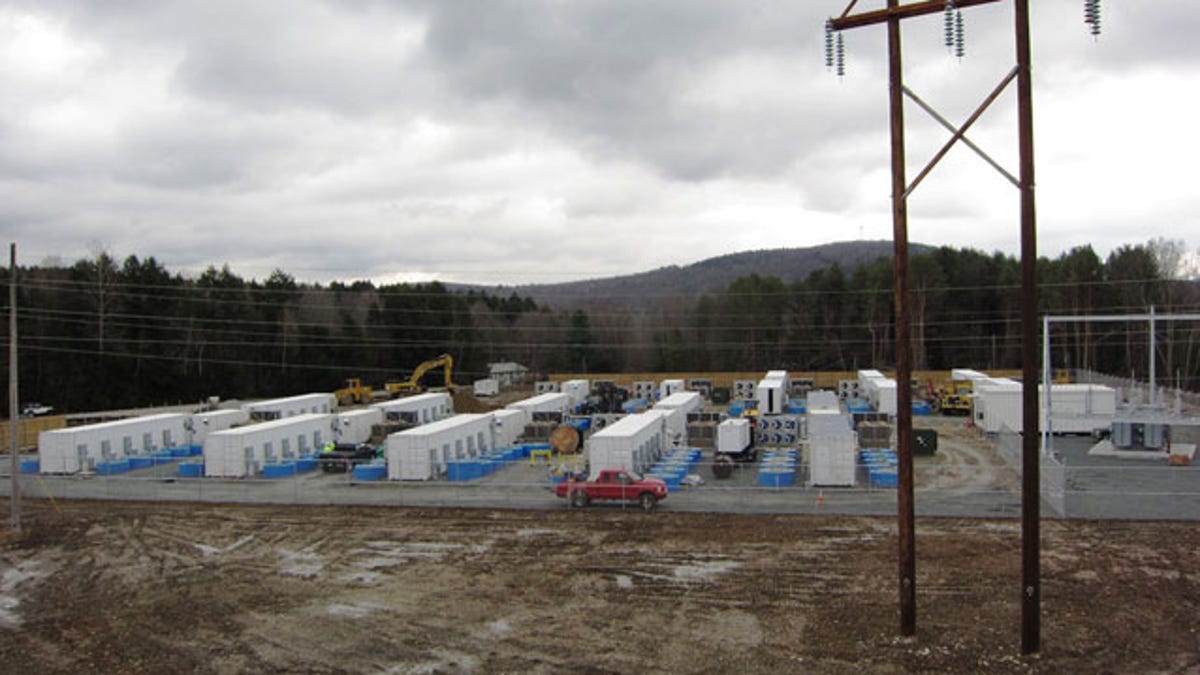Flywheel storage maker Beacon Power declares bankruptcy
Beacon Power, which received a $43 million DOE loan guarantee from the same program that Solyndra did, is bankrupt after running out of money.

Beacon Power, which secured a $43 million federal loan guarantee to install a flywheel grid storage system, has declared bankruptcy in a case that will likely draw more complaints about government loans to small clean-energy companies.
The Tyngsboro, Mass.-based company yesterday filed for Chapter 11 protection in bankruptcy court because it was unable to raise money through the stock market. Beacon Power has never been profitable and earlier this month received a Nasdaq delisting notice after its stock had been under $1 for more than 30 days.
"The current economic and political climate, the financing terms mandated by DOE, and Beacon's recent delisting notice from Nasdaq have together severely restricted Beacon's access to additional investments through the equity markets," CEO William Capp said in papers filed yesterday in U.S. Bankruptcy Court in Wilmington, Del., according to a Bloomberg report.
Last year, Beacon Power received a $43 million loan guarantee from the Department of Energy to build the first large-scale grid storage project to use flywheels. Fast-spinning flywheels can absorb and dispatch quick bursts of power onto the grid to maintain a balance between supply and demand.
The company's 20-megawatt flywheel installation has been providing these frequency regulation services from its plant in Stephentown, N.Y., since this summer when Energy Secretary Steven Chu was on hand for the opening ceremony. Frequency regulation is normally provided by ramping up power generation from natural gas plants.
Earlier this month, the Federal Regulatory Energy Commission (FERC) changed the regulations in a way that would significantly benefit Beacon Power financially because its technology can ramp up power very rapidly compared to gas plants. Instead of being compensated only for power, storage providers will also get value for the speed with which power is provided.
Bankrupt solar company Solyndra received a loan guarantee from the same DOE program although, at $535 million, it was substantially larger. In an e-mail to Bloomberg, U.S. Rep Cliff Stearns (R-Fla.), who is leading the investigation into Solyndra's loan, said Beacon Power's failure shows the DOE has fallen short in delivering jobs it had promised.
One significant difference from Solyndra is that Beacon Power's government-backed asset--a power plant--is generating revenue. Capp estimated the change in the FERC ruling could double its revenue, according to reports.
Beacon Power had received a $5 million grant from the state of Pennsylvania to build another 20-megawatt flywheel plant in the state. Like the Stephentown, N.Y., plant, it would have 200 flywheels, each capable of generating or absorbing one megawatt of power for 15 minutes without generating any emissions as a power plant does. The New York State Energy Research and Development Authority also provided a $2 million grant for the New York plant.
• 200 flywheels of storage to keep grid power steady
• Flywheel power grid storage project gets DOE loan
• No wind? No problem with giant battery bank
The technology behind Beacon Power and was years in development, costing an estimated $200 million in research and development. Each cylinder-shape flywheel, which is about 7 feet tall, is made of carbon fiber and levitated in a vacuum by magnets to reduce friction. The flywheels are constantly spinning thousands of revolutions per minute.
The DOE loan guarantee enabled the company to deploy its technology at a larger scale, which was the intent of the program when it was created in 2007.
The Stephentown plant did suffer one reported problem since going online earlier this year. Two of the 200 flywheels suffered a failure because of a product defect and were temporarily brought offline, according to a report.

